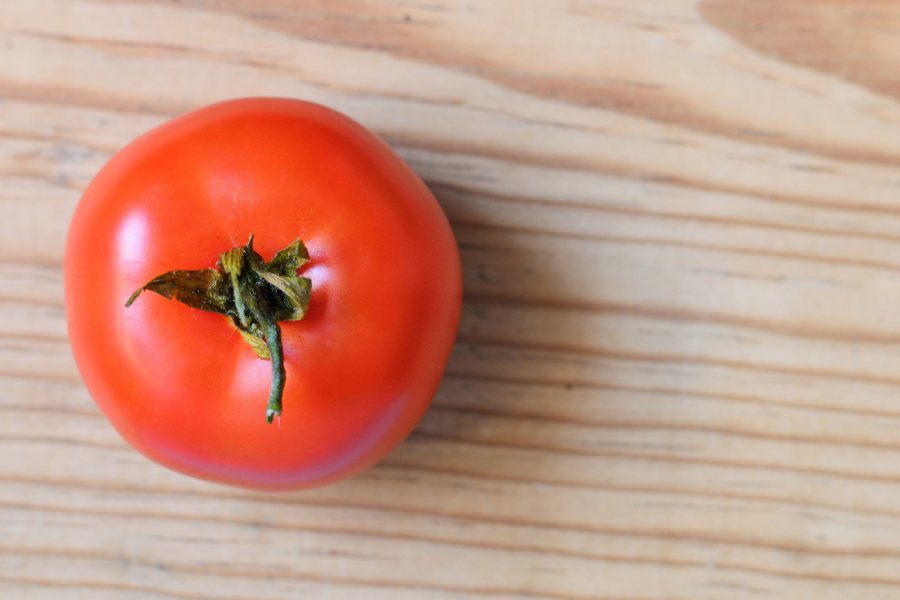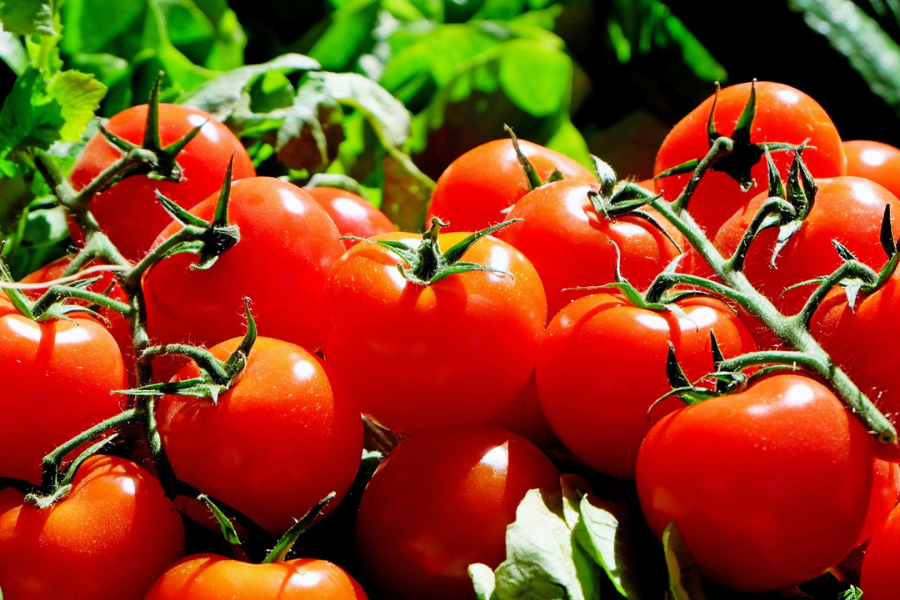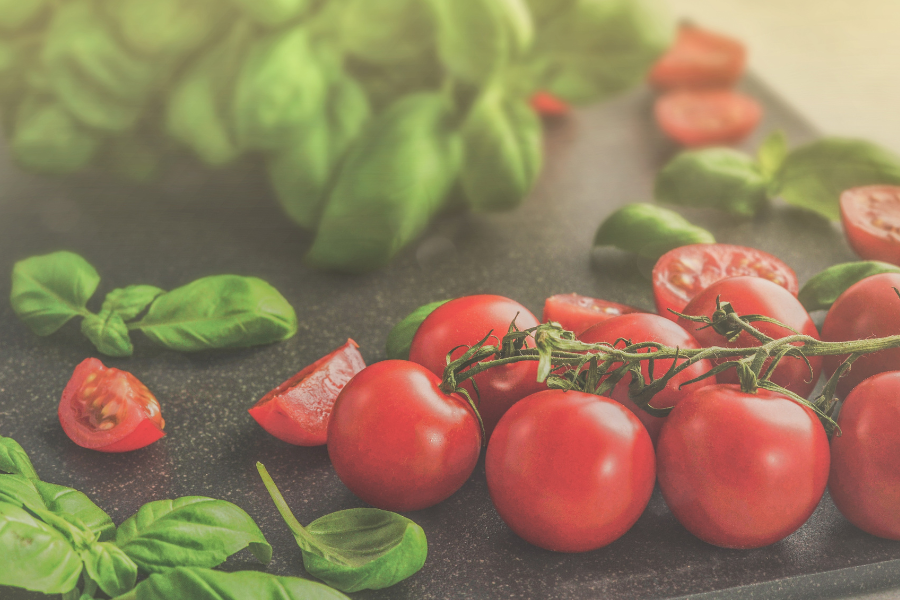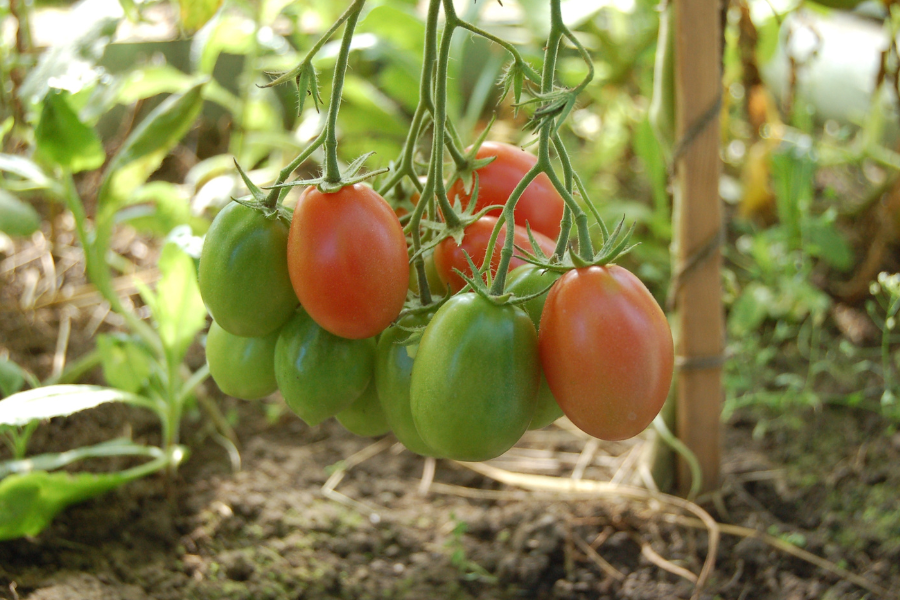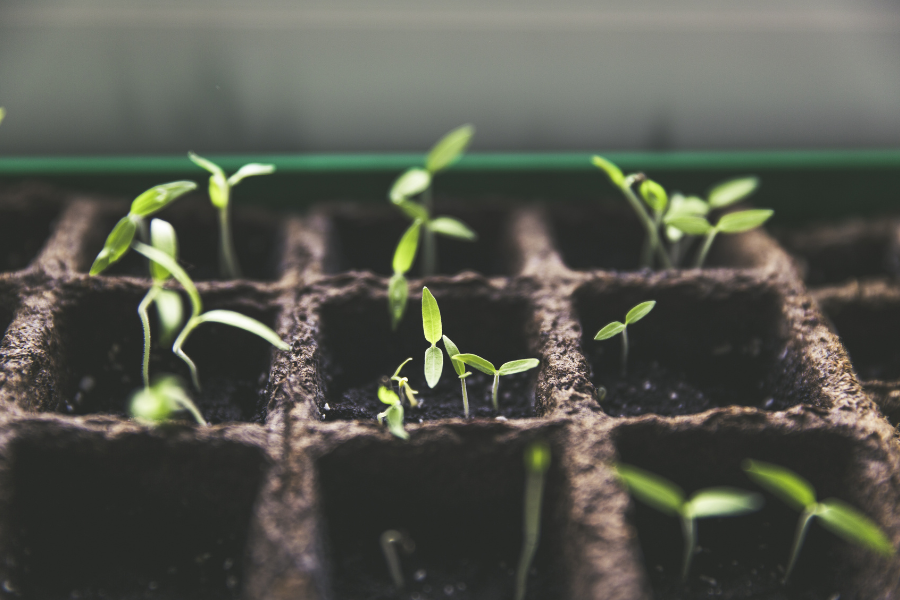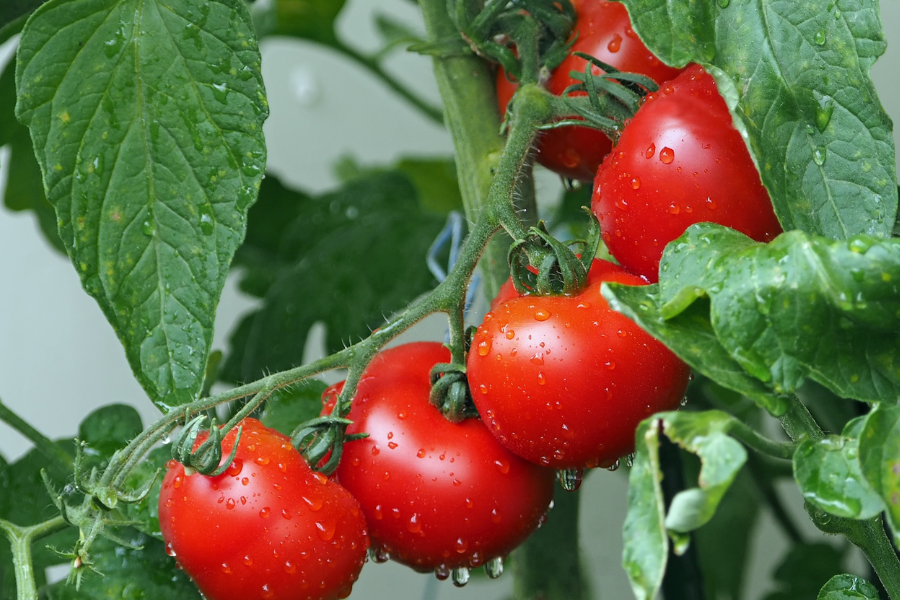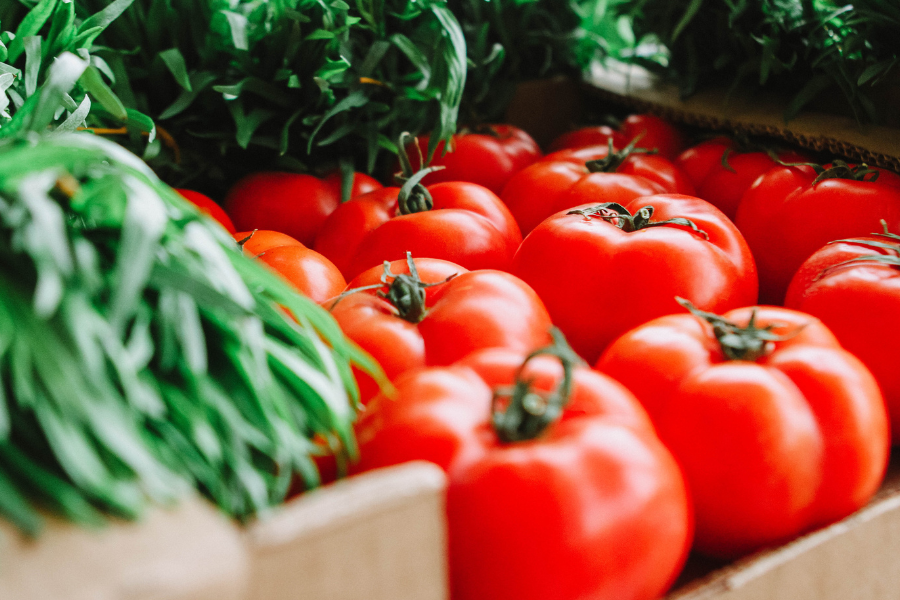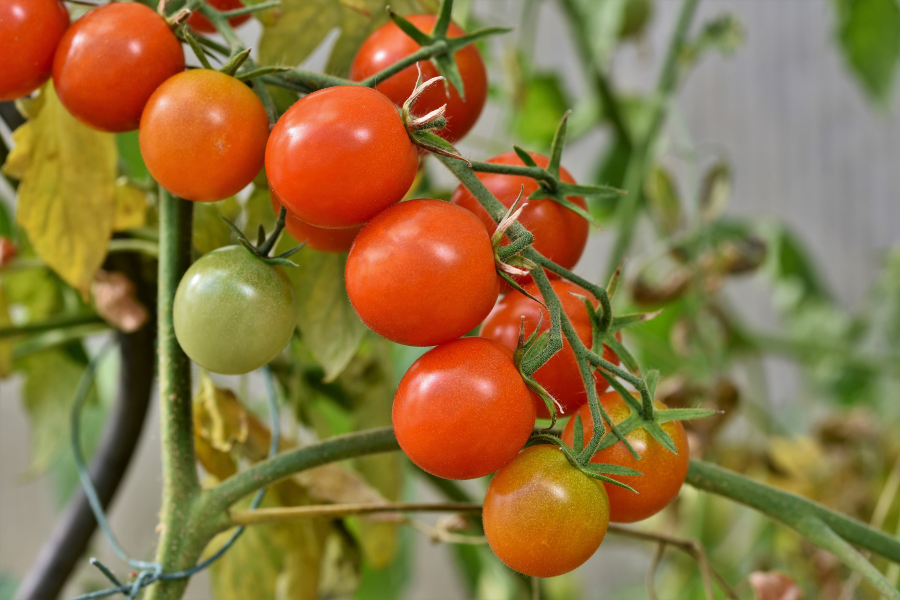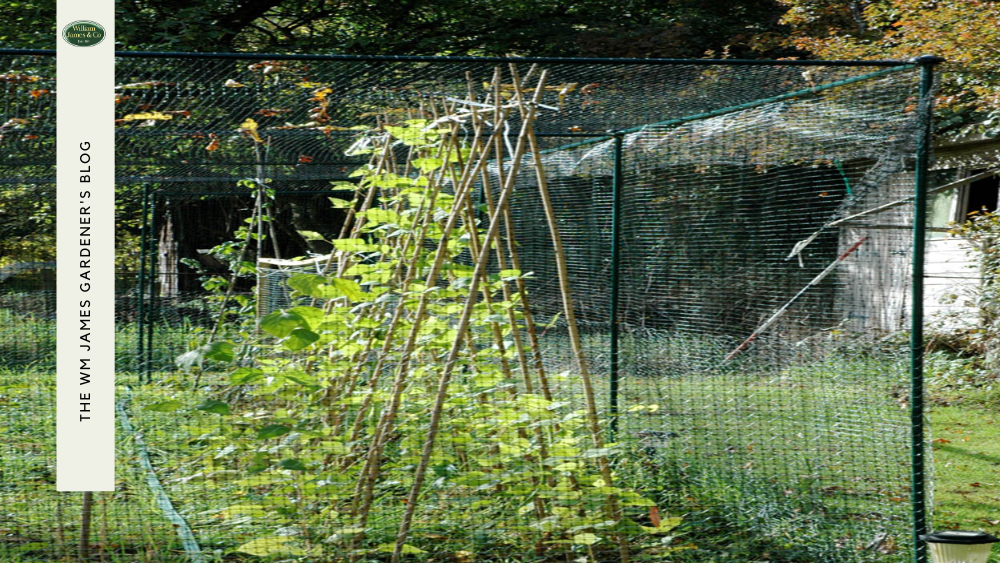We use cookies to make your experience better. To comply with the new e-Privacy directive, we need to ask for your consent to set the cookies. Learn more.
What Size Pot You Need to Grow Tomatoes Healthily
- Admin
- WM James Gardening Blog
- 21 Sept 2024
-
187views

Growing tomatoes at home is one of the easiest and most rewarding veggies you can go for. Knowing what size pots for tomatoes is key to ensuring your crops have enough space to grow happily and healthily – and we’ve got all the answers you need.
Not only do pots and containers save space, but they also make it possible to grow delicious crops in almost any outdoor space.
Whether it’s tucked neatly into your greenhouse or displayed proudly on your garden patio, you can grow ripe and plump tomatoes in pots easily.
To help you grow your own delicious, fresh tomatoes of all varieties in any garden space, we've put together a little guide to help you determine what size pot you need for your tomato plants and how to help them thrive.
|
Our Tomato Growing Top Tips
|
What Size Pots For Tomatoes?
Selecting the right pot size for your tomato plants is an important first step in your gardening journey. To ensure optimal results, consider the type of tomatoes you're planting and their growth habits.
For most determinate cultivar tomatoes (bush varieties), a pot with a minimum capacity of 10 to 15 litres (about 2.5 to 4 gallons) is ideal.
Indeterminate tomatoes, known for their taller growth and need for more root space, thrive in larger pots of 20 to 30 litres (5 to 7.5 gallons).
|
Additionally, remember to ensure your pots have adequate drainage holes to prevent waterlogging, as tomatoes flourish in well-draining soil. |
What Determines the Pot Size for Tomatoes?
Several key factors come into play when deciding on the container sizes for your tomato plants…
Firstly, the variety of tomatoes you choose is crucial; determinate varieties, which tend to remain compact, require less root space compared to indeterminate types, which can grow significantly taller and wider.
As a result, selecting a larger pot for indeterminate tomatoes not only accommodates their expansive root systems but also supports their overall growth and productivity.
Furthermore, the amount of space available in your garden or on your patio can influence your pot choice. If you're limited on space, opting for smaller, determinate varieties in appropriately sized pots can help maximise your yield without overwhelming your area.
Conversely, if you have ample room, larger pots can be used for indeterminate types, facilitating better air circulation and reducing the risk of disease.
By carefully assessing the plant variety and the space at your disposal, you can choose a pot size that optimally supports your tomato plants’ growth and health.
Achieve Vegetable Container Gardening Success This Season
The Best Types of Pots for Growing Tomatoes
When it comes to growing tomatoes, selecting the right type of pot can significantly influence their health and productivity. Here are some of the best options:
Small Balcony Tomato Pots
For those with limited space, small balcony pots or tiered gardens are a practical choice. Using compact containers or pots allows you to grow smaller types of tomatoes (and other plants) in very limited spaces.
The Vigoroot Balcony Garden is ideal for green thumbs with limited outdoor space. It works really well in the sheltered corners of balconies, decks, and patios to provide you with fresh, homegrown tomatoes throughout the summer.
These compact containers are perfect for dwarf or determinate tomato varieties. They easily fit on balconies or small patios and can add a touch of greenery to urban living spaces.
Shop Our Top-Quality Planting Tools
Patio Vegetable Planters
Vegetable planters are versatile containers that can accommodate multiple plants at once. They usually come in larger sizes and are great for growing indeterminate tomatoes, as they provide ample root space.
These planters often feature drainage systems and can be positioned in gardens or on terraces to maximise sunlight exposure.
Our set of 3 Patio Vegetable Planters is ideal for growing most types of tomatoes on your patio, balcony, or decking.
The built-in drainage keeps your tomato plants hydrated without bogging them down. Also, they're collapsible for easy storage when not in use during the winter.
Find the Perfect Raised Beds & Planters for Your Garden
Growing Frames for Tomatoes
Although growing frames aren't technically a pot, they do come in handy when growing tomatoes in pots or small spaces.
These metal frames are designed to support indeterminate varieties and can also be used in gardens or on patios. They provide ample space for the plants to grow upwards while still allowing air circulation.
Our Tomato Crop Booster frame is perfect for supporting your tomato plants throughout their growth journey. The TenderbraceTM support system features sturdy construction with a clip and slide design to make alterations for maximum yield.
We also sell our Tomato Crop Booster Frame & Cover for an all-in-one system to support and protect your tomato plants from late frosts and particularly windy weather.
How to Grow Tomato Plants in Pots
If you've never grown tomatoes before, or you've downgraded from a garden with flowerbeds and plenty of bedding plants to a smaller outdoor space, you might be unfamiliar with the process of growing plants in pots or grow bags.
Here's our expert step-by-step guide to growing tomatoes in pots on patios or balconies:
What You Need for Growing Tomatoes in Pots
To successfully grow tomatoes in pots, it's essential to gather the right tools and materials to create a conducive environment for your plants. Here's a list of what you'll need:
|
Planting Tomato Plants in Pots
To plant tomato plants in pots, fill the container with a good potting mix, leaving an inch of space at the top.
Dig a hole in the centre deep enough for the tomato plant's root ball. Take the plant and gently loosen the roots if they’re tightly bound. Place the plant in the hole, making sure the soil level matches that of the nursery pot.
Fill around the root ball with potting mix, pressing lightly, and water thoroughly to settle the soil and eliminate air pockets.
The Best Soil For Growing Vegetables Sustainably
Growing Tomatoes in Containers
To care for tomatoes in containers as they grow, ensure they receive consistent watering, keeping the soil moist but not waterlogged.
Position the containers in a sunny spot that gets at least 6-8 hours of direct sunlight each day, as tomatoes thrive in bright conditions.
Check regularly for garden pests and diseases, and support the plants with stakes or frames as they grow taller.
|
Consider rotating the pots occasionally to promote even sunlight exposure on all sides. |
Harvesting Your Pot-Grown Tomatoes
Harvest your pot-grown tomatoes when they are fully coloured and slightly soft to the touch, indicating ripeness.
Gently twist or cut the fruits from the stem to avoid damaging the plant. Timing varies by variety, but typically, tomatoes are ready to harvest 60 to 100 days after planting.
|
Remember to inspect your plants regularly, as they may produce multiple fruits at different times throughout the growing season. |
When to Repot Tomato Plants
Repotting tomato plants is essential when they outgrow their initial containers, typically indicated by roots emerging from the drainage holes or stunted growth.
For those starting with seedlings, it's advisable to repot them when they have at least two sets of true leaves, moving them to a larger pot of 10 to 15 litres (2.5 to 4 gallons).
This ensures they have adequate space for root development, which is crucial for robust growth and yielding a bountiful harvest.
Remember to always transplant gently to minimise root disturbance.
Key Takeaways: Yield a Bumper Crop With the Correct Size Tomato Pots
When you choose the right pot size for planting tomatoes, you're setting the stage for optimal growth and yield. Larger pots ensure plenty of space for root development, allowing plants to efficiently access water and nutrients.
This thoughtful approach leads to robust plants capable of producing an abundant harvest, maximising your fresh tomato yield wherever you decide to grow your garden.
Find all the equipment and tools you need to grow delicious fruits and vegetables from WM James & Co.
FAQs
How Do Container Sizes Affect Tomato Growth?
Container sizes impact tomato growth by limiting root space. Adequately sized pots (10-30 litres) facilitate better water and nutrient absorption, which promotes healthy growth and boosts the overall yield, particularly for fast-growing indeterminate tomato varieties.
Is a 10-Litre Pot Big Enough for Tomatoes?
A 10-litre pot is typically suitable for determinate tomatoes, which have compact growth. However, for indeterminate varieties, a larger pot of 20 to 30 litres is recommended to accommodate their more extensive root systems for optimal growth.
How Many Tomato Plants in a 12 Inch Pot?
You can typically plant one determinate tomato plant in a 12-inch pot to ensure adequate space for root development and optimal growth.
Is It Better to Grow Tomatoes in Pots or Grow Bags?
Growing tomatoes in pots is often better than in grow bags, as pots provide stability, better drainage, and insulation for roots. They also allow for easier management of soil quality and moisture levels, promoting healthier plants and higher yields.

